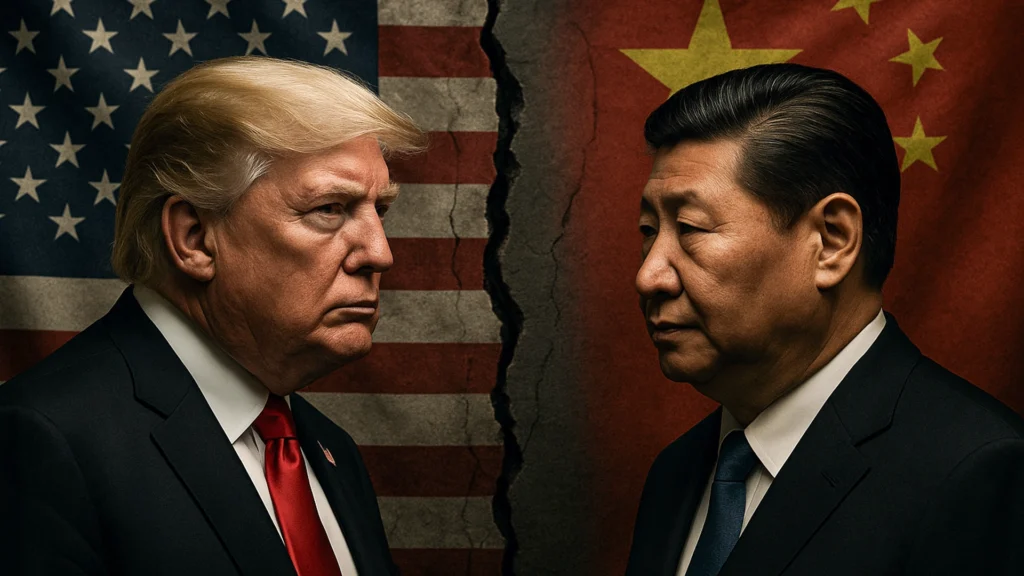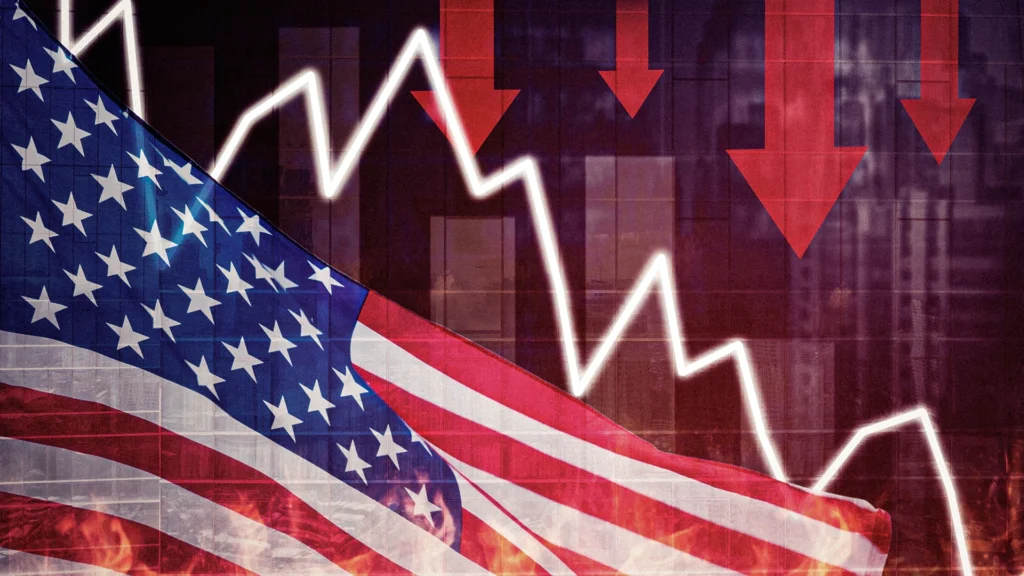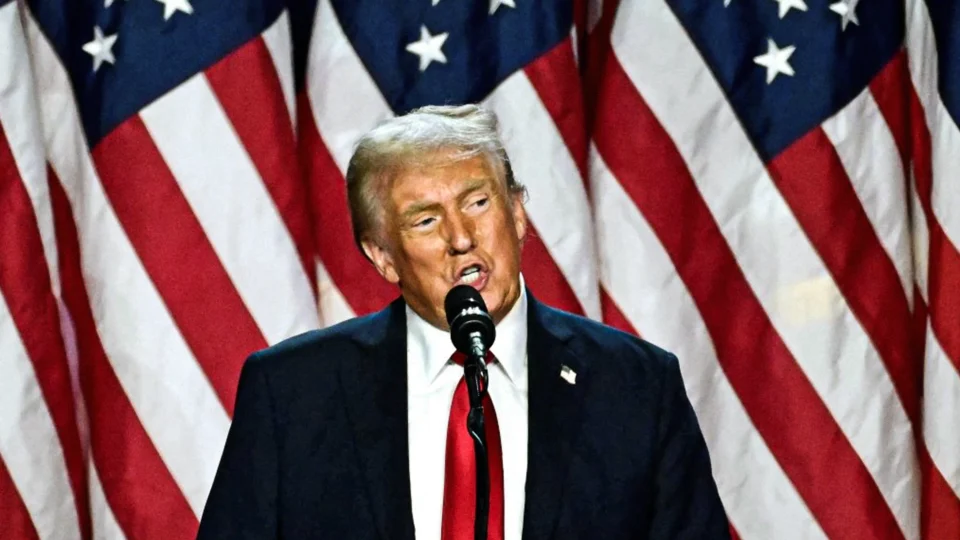How the first 100 days of the new Trump administration have impacted the economy, trade and global geopolitics
Donald Trump’s return to the presidency has reignited American protectionism and redefined the role of the US on the global stage
After a four-year break from the White House, Donald Trump has returned for a second presidential term in the United States, resuming his political agenda with even more vigor. However, since his election, Trump has launched measures that have already strongly impacted both the American economy and the international geopolitical chessboard, rekindling global debates about the new repositioning of the US and putting the nation’s future as the greatest power on the planet in check.
Donald Trump’s first 100 days in office have been marked by his (not so) new administration, which has revived old flags such as economic protectionism and greater migration control, only now adapted to a post-pandemic world, marked by economic uncertainties and technological disputes with China. In this context, we will analyze how Trump’s new policies influence the trade war with China, the risks of an American recession, the migration reform and crisis, and the new role of the US on the global stage.
Trade war: the new US escalation against China and allies

Since his first term in office, Trump has argued that the United States is at a disadvantage in its trade relations, especially with China. His return to power has reactivated this thesis, with an even more aggressive package of tariffs on Chinese products, including semiconductors, electric vehicles and solar panels.
In addition to China, other countries have also been on the radar: Mexico has been pressured to comply with environmental targets in the USMCA (United States-Mexico-Canada Agreement), and the European Union has faced new taxes on steel and agricultural products.
These were the main measures adopted by the Trump administration in 2025:
- Imposition of additional tariffs of up to 150% on Chinese high-tech goods;
- Expansion of the list of Chinese companies banned from operating in the US, especially in the AI and telecommunications sectors;
- Revision of trade agreements with Southeast Asia, seeking to demand more competitive clauses for US industry.
This stance has caused discomfort in several countries, especially those directly affected by the tariffs, as well as arousing fears in international markets about a new wave of deglobalization and disruptions in essential production chains, such as chips and rare metals.
How inflation, interest rates and tension in the markets have intensified the risk of an American recession
The intensification of the trade war promoted by the current Trump administration coincides with an even more vulnerable macroeconomic environment. American inflation, which had been gradually receding, is once again showing signs of pressure, especially in the energy sector and durable goods. The new tariffs imposed on Chinese and European products could raise consumer inflation in the coming months, further complicating the work of the Federal Reserve (US Central Bank), which is keeping the basic interest rate above 5%.
Meanwhile, the financial markets are picking up signs of fragility in American economic activity. The yield curve for Treasuries, the index that shows the interest the US government pays to borrow money over different terms, continues to be inverted. This is a traditional indicator of future recession which, coupled with the drop below 50 points in the ISM manufacturing index, reveals contraction in the sector.

There are misgivings, despite optimistic talk
For these and other reasons, companies have been more cautious in their investments, keeping business confidence low for fear that high interest rates and an aggressive trade policy could limit their recovery. Despite this, the Trump administration maintains an optimistic discourse, attributing the current economic adjustments to the “beginning of a new reindustrialization”.
According to the US government, billions are being invested in industry, especially in strategic sectors such as semiconductors and defense. However, so far, growth in industrial employment and production indicators is still modest, with no concrete confirmation of the transformation promised by the American leadership.
US aggressive stance generates side effects
Volatility in the markets has increased, with the VIX (Volatility Index), known as the “fear index” of the US stock market, recording strong recent rises. Meanwhile, the currencies of emerging economies depreciated in the face of global risk aversion. The price of gold, meanwhile, has also risen consistently, indicating greater investor apprehension about the economic future.
Given this context, the major challenge for the coming months will be to calibrate economic policy to prevent the combination of tariffs, high interest rates and unstable business confidence from resulting in a prolonged recession on American soil. The government’s ability to make adjustments without further deepening internal and external tensions will be decisive for the United States’ economic performance until the end of 2025.
New US migration policy: barriers, filters and economic priorities
The migration agenda has once again become one of the central pillars of the second Trump administration. In his first 100 days in office, the president signed a series of executive orders overhauling the system for granting visas. The new guidelines introduced criteria that include greater cultural alignment with so-called “American values” and stricter scrutiny of foreign students, especially those linked to political movements considered hostile to US interests.
In addition, the State Department has begun to prioritize visas for strategic professionals, focusing on sensitive areas such as defense, semiconductors and artificial intelligence. Experts estimate that approximately 20% of the new work permits issued in the first quarter went to engineers, data scientists and cybersecurity specialists, as part of a strategy to strengthen American technological competitiveness.
US and its zero tolerance policy for illegal immigration
For irregular immigration, the zero tolerance policy has been reinstated with vigor. Preliminary figures indicate an increase of around 30% in deportations compared to the same period last year. Thousands of members of the National Guard have also been deployed to reinforce security in sensitive areas of the southern border, generating diplomatic tensions with Latin American countries and provoking critical reactions from international human rights organizations.
The tightening of migration policy has directly affected the academic environment. Several renowned universities, which traditionally rely on international diversity for research programs and funding, have seen a drop in applications from foreign students. Preliminary estimates point to a reduction of around 12% in the number of new student visas issued compared to the same period last year, accentuating concerns about the loss of global talent.
The new American approach generates political and social divisions
Conservative sectors praise the emphasis on security and national values, while business and educational leaders warn of negative impacts on innovation and the US’s ability to attract brilliant minds. In the short term, the new American model is expected to increase the rigidity of migration flows and reinforce the image of a more closed country, with as yet uncertain effects on economic growth.
In the long term, the success or failure of this policy will depend on the ability to balance national security interests with the need to maintain the United States as a preferred destination for global talent. Too many restrictions could jeopardize the technological and scientific dynamism that has historically driven American leadership on the international stage.

Geopolitical repositioning of the United States in 2025
In foreign policy, Trump’s second term has been marked by an even sharper turn towards unilateralism. Instead of passive isolation, the government has adopted a strategy of direct action and, in many cases, without prior consultation with allied countries. The North Atlantic Treaty Organization (NATO), for example, has once again been the target of public criticism from the US government. Trump has threatened to reduce the United States’ military commitment if European countries do not raise their defense spending to at least 3% of GDP, above the traditional target of 2% set at previous summits. Currently, only 11 of the 31 member countries meet this minimum target, exacerbating tension in the bloc.
This repositioning reflects a more aggressive and pragmatic foreign policy, centered on strengthening the United States’ technological and energy supremacy. The administration has announced bilateral initiatives with selected allies to develop secure supply chains in strategic sectors such as semiconductors and renewable energy, minimizing dependence on rivals such as China and Russia.
Measures generate adverse reactions and global repercussions
Tensions with Beijing, however, have increased following the imposition of these new technological restrictions, especially in the artificial intelligence and telecommunications sectors. As for Russia, the US government extended economic sanctions targeting the mining and finance sectors, in response to destabilizing actions in regions of Eastern Europe. These measures have generated adverse but expected reactions, with Moscow and Beijing intensifying bilateral trade and military agreements as a form of resistance to the geopolitical siege led by Washington.
Internally, the strategy is justified as a necessary repositioning to restore American global leadership in economic, military and technological terms. However, critics point out that moving away from traditional allies, such as Germany and France, could undermine the US’s capacity for diplomatic articulation in times of international crisis, as well as opening up space for new rival alliances.
In the medium term, the effectiveness of this new positioning will depend on the US ability to maintain its influence without the traditional network of multilateral coalitions. If the mismatch with partner countries widens, the US runs the risk of facing a scenario of accelerated multipolarity, with greater contestation of its leadership in the main international forums.
Reactions to the Trump administration: cautious allies, rivals on alert
Trump’s return to power has generated mixed reactions around the world. While leaders of countries like Hungary and Israel celebrated the return of a “global conservative order”, other nations adopted a more defensive stance. France and Germany, for example, intensified negotiations to strengthen the European Union’s strategic autonomy, launching initiatives such as the European Defense Agreement and regional economic pacts without the direct participation of the United States. In Japan, the government has strengthened trade agreements with Southeast Asia and Australia to reduce dependence on the American market.
Latin America and Canada at the center of possible trade barriers
In Latin America, countries like Mexico and Brazil are concerned about the possibility of new trade barriers. The agricultural sector, in particular, fears the imposition of retaliatory tariffs, since the US imports around US$ 50 billion worth of agricultural products from the region every year. In the automotive sector, Mexico, the main exporter to the US market, is evaluating market diversification measures to mitigate risks in the event that renegotiations of the Free Trade Agreement between the US, Mexico and Canada (United States-Mexico-Canada Agreement or USMCA) move forward on unfavorable terms.
Canada, for its part, has already signaled that it will adopt immediate retaliatory measures if the Trump administration goes ahead with revising the clauses of the USMCA. Ottawa is considering surcharging sensitive products such as steel, aluminum and American agricultural products, replicating the strategy used during the 2018-2019 trade disputes.
Trump’s strategy leads to a multipolar and competitive global environment
China, sensing the worsening of US foreign policy, has intensified its diplomatic and economic activities in the Global South. In the first quarter of 2025 alone, Beijing signed more than US$40 billion in new infrastructure and technology agreements with countries in Africa and Latin America, seeking to consolidate its influence in regions where the United States has faced diplomatic resistance.
In an increasingly fragmented global environment, Trump’s return has rapidly redefined alliances and rivalries. While traditional allies adopt strategies of containment and diversification, rivals like China and Russia seek to fill the spaces left by the US diplomatic retrenchment, accelerating the construction of a new, more multipolar and competitive international order.

A new world order established by the United States
The first 100 days of Donald Trump’s second term make clear the American intentions to restore a world order centered on US interests, even at the cost of trade, diplomatic and social tensions in the rest of the world. With swift and forceful actions, the Trump administration has reignited fears, expectations and global debates about technological leadership, protectionism, immigration and new military alliances.
The trade war was reactivated with a new round of tariffs against China and strategic allies, raising the risks of fragmentation of global production chains. Domestically, concerns about inflation and the possibility of a technical recession challenge American economic stability, while the government adopts a narrative of reindustrialization to support its policies.
In the migratory field, the changes in the criteria for granting visas and the tightening of controls on illegal immigration are aimed at strengthening security and competitiveness, but they are already having a negative impact on attracting talent and on the academic environment. In the international arena, the more unilateral and aggressive geopolitical repositioning is increasing distrust between former allies and boosting the rise of alternative blocs, such as the BRICS.
The United States: a future marked by uncertainty
If, on the one hand, the assertiveness of the new US administration could generate occasional gains in economic sovereignty and national security, on the other, the risk of diplomatic isolation and economic stagnation cannot be ruled out. Maintaining a policy of simultaneous confrontation on multiple fronts will require political skill which, so far, has not proved to be a priority for the US government.
Thus, the coming months will be decisive in gauging whether Trump’s project of global repositioning will be consolidated as a new era of American supremacy or whether it will precipitate a phase of accelerated transition to a multipolar international order, with fragmented leaderships and weaker cooperation dynamics.
Follow TelliCoJus for more expert analysis on global economic scenarios, the most suitable offshore jurisdictions and the best strategies for protecting and expanding businesses and assets internationally.
